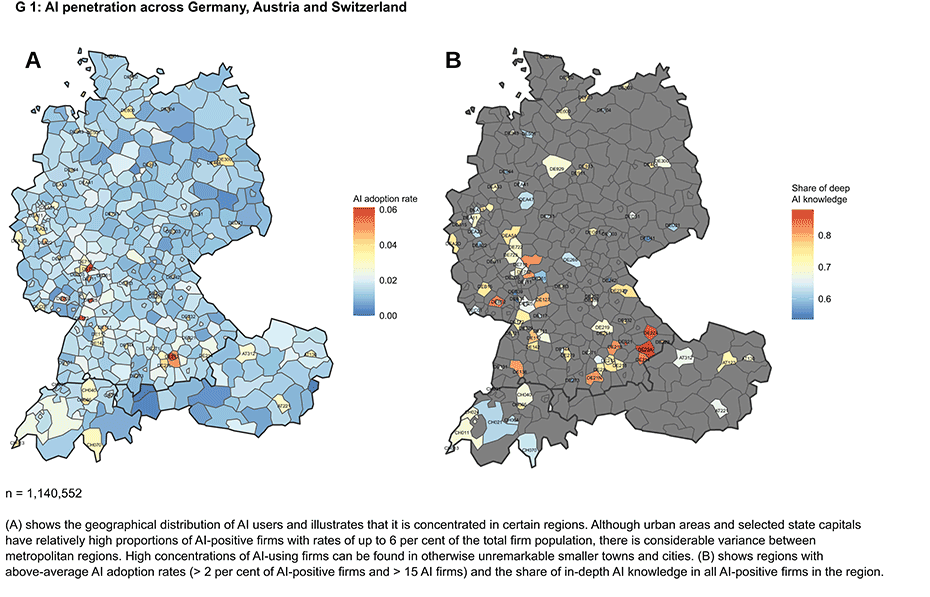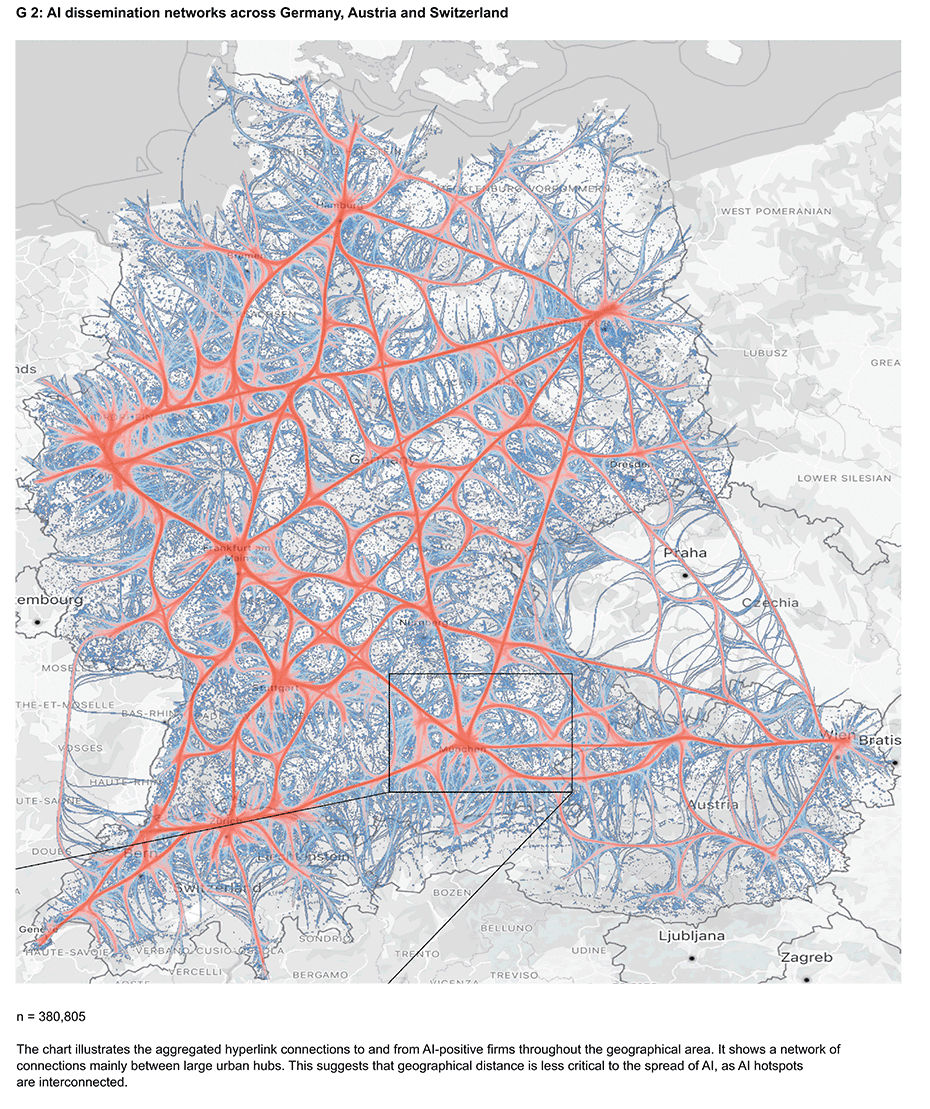
Artificial intelligence: how networks are controlling firms’ AI expertise
The latest KOF research shows that AI technology is being introduced in relatively closed groups, similar to exclusive clubs. This could lead to a concentration of relevant AI know-how, making it more difficult for this key technology to spread and increasing dependence on a small number of technology providers. This in turn can make the economic performance of different regions less equal. Policymakers should push to overcome excessive cluster effects.
Working closely with an international network of scientists, the KOF Innovation Group is researching how firms, performance and markets are changing as a result of the digital transformation. Particular attention is being paid to artificial intelligence (AI). To find out how firms are using AI, the researchers have trained a transformer language model. To do so, they used text data from over 1.1 million websites and created a hyperlink network of more than 380,000 firms across Germany, Austria and Switzerland.
The results of the sample show that 2.2 per cent of firms have in-depth knowledge of AI, which is already having an impact on their business activities. AI is deeply embedded in some sectors such as ICT services, engineering, retail and wholesale.
The findings of this analysis show that the introduction of AI is associated with three significant channels of epidemic effects. Firstly, the location of the firm plays a role, especially if it is located in an industrial and/or regional hotspot associated with the production of AI expertise. This exposes the firm to a high degree of indirect pressure, which can potentially lead to a ‘follower’ adoption approach.
Secondly, the firm’s integration into the AI knowledge network affects further dissemination. The more closed the system of AI users is, the less likely it is to spread further, the authors of the study argue.
Thirdly, the existence of strong direct links between firms increases the probability of AI knowledge transfers. However, the effectiveness of the direct transfer of AI knowledge depends on the cognitive proximity of partners, the strength of the link and the depth of the expertise shared. Strong direct links between firms seem to transcend geographical distance and could thus be a potential focus for policy measures to encourage diffusion beyond local clusters.
Corporate networks form AI hubs
Chart G1 illustrates the geographical spread of AI applications and shows that this is concentrated in certain regions. These regions are often connected by networks, which means that the transfer of AI knowledge is not hampered by geographical distance (see chart G2). However, access to these networks is crucial for firms. The research shows that the introduction of AI in business takes place in relatively closed groups, similar to exclusive clubs. The firms’ integration into a network proves to be decisive in turning them into experienced users of AI.
Structural competitive disadvantages
The structure of these networks poses a challenge for the future spread of AI throughout the economy. Knowledge is unevenly distributed in terms of regions, industries and clusters. Viewed over the long term, this dynamic could cause structural competitive disadvantages and economic inequality relating to the transformational potential of AI technology and create a scenario with very few winners and numerous dependencies.
What this means for politics and management
To prevent this scenario, the researchers recommend monitoring the spread of this key technology using timely innovation metrics such as web-based measurements that focus on individual firm clusters. Policy instruments aimed at promoting the use of AI technology should support the production and application of AI technology as well as the links between unrelated clusters.
Viewed at management level, the research findings emphasise the importance of understanding how technology-relevant information enters firms and how it is processed across hierarchies. This understanding is crucial to the successful adoption of AI technology.
Further information on this article can be found in the NFP-77-News: external pagehttps://www.nfp77.ch/en/brCvrwixLKY4Qpw2/news/ai-revolution-how-closed-networks-are-turning-companies-into-experts and in the original publication, which appeared in the journal ‘Research Policy’: Dahlke, J., M. Beck, J. Kinne, D. Lenz, R. Dehghan, M. Wörter, & B. Ebersberger (2024): Epidemic effects in the diffusion of emerging digital technologies: evidence from artificial intelligence adoption. Research Policy, 53(2), 104917: external pagehttps://doi.org/10.1016/j.respol.2023.104917
Contacts
KOF FB Innovationsökonomik
Leonhardstrasse 21
8092
Zürich
Switzerland
KOF Konjunkturforschungsstelle
Leonhardstrasse 21
8092
Zürich
Switzerland
Universität Twente


